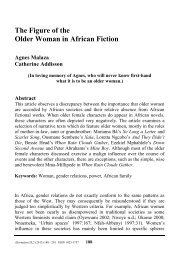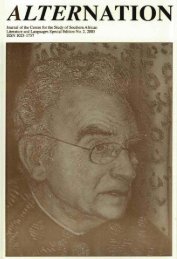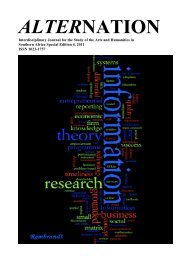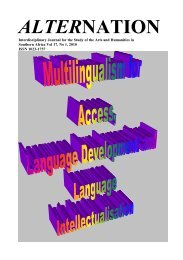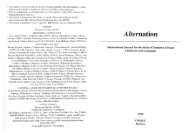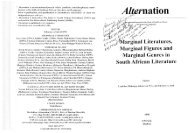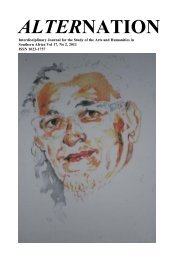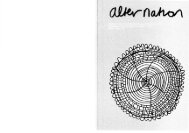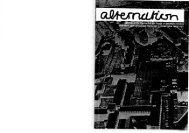Re-reading The Purloined Letter - Alternation Journal
Re-reading The Purloined Letter - Alternation Journal
Re-reading The Purloined Letter - Alternation Journal
You also want an ePaper? Increase the reach of your titles
YUMPU automatically turns print PDFs into web optimized ePapers that Google loves.
Pravina Pillay<br />
Derrida criticizes Lacan for failing to account for the literariness of<br />
the Poe story—its narrative devices (and way in which it frames itself), the<br />
context of other Poe’s stories—in order to read the story as a purely analytic<br />
narrative. One of Johnson’s concerns is to bring both of these possibilities<br />
together—a narrative read for its analytic interest but precisely as fictive or<br />
poetic writing. <strong>The</strong> letter for Lacan, is important not because of its content<br />
but because of its movement—its content is absent. Derrida, however, turns<br />
the absence into another kind of truth. Derrida believes that Lacan in <strong>reading</strong><br />
<strong>The</strong> <strong>Purloined</strong> <strong>Letter</strong> as an allegory of the signifier, has made the signifier<br />
the story’s truth. With this moment of consolidation, the text loses its<br />
indeterminate textuality, despite Lacan’s emphasis on the mobility of<br />
elements within the story. But more important than this for Derrida, is<br />
Lacan’s lack of interest in the multiple literary references which frame, and<br />
are contained by, the text, the sense in which it is obsessed with the written<br />
word and transgresses the limits of the story itself, as it refers and spills<br />
beyond itself. Champagne (1995:13) states that for Derrida, Lacan’s text is<br />
an inter-text—not entirely his own work. In the midst of several different<br />
critiques of psychobiographical ‘decoding’, comes a strange re-emergence of<br />
Marie Bonaparte’s strategies; she ironically becomes one of the crucial intertextual<br />
reference points between these texts:<br />
<strong>The</strong> very Oedipal <strong>reading</strong> that Derrida attributes to Lacan is itself,<br />
according to Derrida, a purloined letter—purloined by Lacan from<br />
Marie Bonaparte’s psychobiographical study of the life and works of<br />
Edgar Allan Poe (Johnson 1980:134).<br />
Thus, it appears that in the apparently endless chain of inter-textuality, all<br />
texts are purloined versions of each other.<br />
Concerning Lacan’s <strong>reading</strong> of <strong>The</strong> <strong>Purloined</strong> <strong>Letter</strong>, I previously<br />
outlined Flower and Cannell’s discussion on the ‘two registers’: exactitude<br />
of measurement, and the register of ‘truth’, the narrative register which<br />
invests Dupin with all manner of ambiguities, aporias and enigmas. This<br />
register is indeed, as Derrida complains, that of the ‘truth’ of the signifier,<br />
the truth of the phallus, the one by which Lacan writes ‘we measure the<br />
supremacy of the signifier in the subject’ (Flower & Cannell 1986:20). It is<br />
where we are blinded.<br />
390



